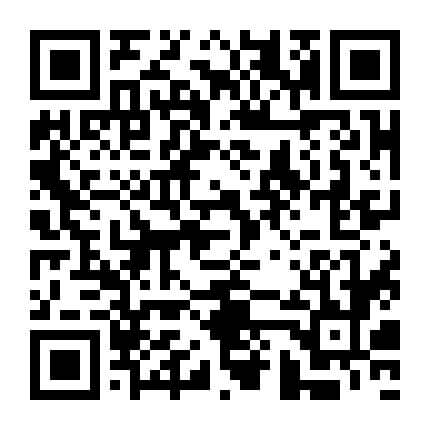考研201英语(一)在线题库每日一练(一百一十四)
摘要:以下是希赛网给大家分享考研201英语(一)在线题库每日一练,希望通过刷题可以帮助大家巩固重要知识点,对知识点查漏补缺,祝愿大家能顺利通过考试!
本文提供考研201英语(一)在线题库每日一练,以下为具体内容
1、In 1924 America's National Research Council sent two engineers to supervise a series of industrial experiments at a large telephone-parts factory called the Hawthorne Plant near Chicago. It hoped they would learn how stop-floor lighting (1)workers' productivity. Instead, the studies ended (2) giving their name to the "Hawthorne effect", the extremely influential idea that the very (3) to being experimented upon changed subjects' behavior. The idea arose because of the behavior of the women in the (4) Hawthorne plant. According to (5) of the experiments, their hourly output rose when lighting was increased, but also when it was dimmed. It did not (6) what was done in the experiment; (7)something was changed, productivity rose. A(n) (8) that they were being experimented upon seemed to be (9) to alter workers' behavior (10) itself. After several decades, the same data were (11) to econometric the analysis. Hawthorne experiments has another surprise in store (12) the descriptions on record, no systematic (13) was found that levels of productivity were related to changes in lighting. It turns out that peculiar way of conducting the experiments may have led to (14) interpretation of what happened. (15), lighting was always changed on a Sunday. When work started again on Monday, output (16) rose compared with the previous Saturday and (17) to rise for the next couple of days. (18), a comparison with data for weeks when there was no experimentation showed that output always went up on Monday, workers (19) to be diligent for the first few days of the week in any case, before (20) a plateau and then slackening off. This suggests that the alleged "Hawthorne effect" is hard to pin down.
问题1
A、affected
B、achieved
C、extracted
D、restored
问题2
A、at
B、up
C、with
D、off
问题3
A、truth
B、sight
C、act
D、proof
问题4
A、controversial
B、perplexing
C、mischievous
D、ambiguous
问题5
A、requirements
B、explanations
C、accounts
D、assessments
问题6
A、conclude
B、matter
C、indicate
D、work
问题7
A、as far as
B、for fear that
C、in case that
D、so long as
问题8
A、awareness
B、expectation
C、sentiment
D、illusion
问题9
A、suitable
B、excessive
C、enough
D、abundant
问题10
A、about
B、for
C、on
D、by
问题11
A、compared
B、shown
C、subjected
D、conveyed
问题12
A、contrary to
B、consistent with
C、parallel with
D、peculiar to
问题13
A、evidence
B、guidance
C、implication
D、source
问题14
A、disputable
B、enlightening
C、reliable
D、misleading
问题15
A、In contrast
B、For example
C、In consequence
D、As usual
问题16
A、duly
B、accidentally
C、unpredictably
D、suddenly
问题17
A、failed
B、ceased
C、started
D、continued
问题18
A、Therefore
B、Furthermore
C、However
D、Meanwhile
问题19
A、attempted
B、tended
C、chose
D、intended
问题20
A、breaking
B、climbing
C、surpassing
D、hitting
2、The rough guide to marketing success used to be that you got what you paid for. No longer. While traditional “paid” media—such as television commercials and print advertisements—still play a major role, companies today can exploit many alternative forms of media. Consumers passionate about a product may create “owned” media by sending e-mail alerts about products and sales to customers registered with its Web site. The way consumers now approach the broad range of factors beyond conventional paid media. Paid and owned media are controlled by marketers promoting their own products. For earned media, such marketers act as the initiator for users' responses. But in some cases, one marketer's owned media become another marketer's paid media—for instance, when an e-commerce retailer sells ad space on its Web site. We define such sold media as owned media whose traffic is so strong that other organizations place their content or e-commerce engines within that environment. This trend, which we believe is still in its infancy, effectively began with retailers and travel providers such as airlines and hotels and will no doubt go further. Johnson & Johnson, for example, has created BabyCenter, a stand-alone media property that promotes complementary and even competitive products. Besides generating income, the presence of other marketers makes the site seem objective, gives companies opportunities to learn valuable information about the appeal of other companies' marketing, and may help expand user traffic for all companies concerned. The same dramatic technological changes that have provided marketers with more (and more diverse) communications choices have also increased the risk that passionate consumers will voice their opinions in quicker, more visible, and much more damaging ways. Such hijacked media are the opposite of earned media: an asset or campaign becomes hostage to consumers, other stakeholders, or activists who make negative allegations about a brand or product. Members of social networks, for instance, are learning that they can hijack media to apply pressure on the businesses that originally created them. If that happens, passionate consumers would try to persuade others to boycott products, putting the reputation of the target company at risk. In such a case, the company's response may not be sufficiently quick or thoughtful, and the learning curve has been steep. Toyota Motor, for example, alleviated some of the damage from its recall crisis earlier this year with a relatively quick and well-orchestrated social-media response campaign, which included efforts to engage with consumers directly on sites such as Twitter and the social-news site Digg. 1.Consumers may create “earned” media when they are( ).2.According to Paragraph 2, sold media feature ( ). 3.The author indicates in Paragraph 3 that earned media ( ). 4.Toyota Motor's experience is cited as an example of ( ). 5.Which of the following is the text mainly about ?
问题1
A、obscssed with online shopping at certain Web sites
B、inspired by product-promoting e-mails sent to them
C、eager to help their friends promote quality products
D、enthusiastic about recommending their favorite products
问题2
A、a safe business environment
B、random competition
C、strong user traffic
D、flexibility in organization
问题3
A、invite constant conflicts with passionate consumers
B、can be used to produce negative effects in marketing
C、may be responsible for fiercer competition
D、deserve all the negative comments about them
问题4
A、responding effectively to hijacked media
B、persuading customers into boycotting products
C、cooperating with supportive consumers
D、taking advantage of hijacked media
问题5
A、Alternatives to conventional paid media.
B、Conflict between hijacked and earned media.
C、Dominance of hijacked media.
D、Popularity of owned media.
3、Come on—Everybody's doing it. That whispered message, half invitation and half forcing, is what most of us think of when we hear the words peer pressure. It usually leads to no good—drinking, drugs and casual sex. But in her new book Join the Club, Tina Rosenberg contends that peer pressure can also be a positive force through what she calls the social cure, in which organizations and officials use the power of group dynamics to help individuals improve their lives and possibly the word. Rosenberg, the recipient of a Pulitzer Prize, offers a host of example of the social cure in action: In South Carolina, a state-sponsored antismoking program called Rage Against the Haze sets out to make cigarettes uncool. In South Africa, an HIV-prevention initiative known as LoveLife recruits young people to promote safe sex among their peers. The idea seems promising, and Rosenberg is a perceptive observer. Her critique of the lameness of many pubic-health campaigns is spot-on: they fail to mobilize peer pressure for healthy habits, and they demonstrate a seriously flawed understanding of psychology. "Dare to be different, please don't smoke!” pleads one billboard campaign aimed at reducing smoking among teenagers-teenagers, who desire nothing more than fitting in. Rosenberg argues convincingly that public-health advocates ought to take a page from advertisers, so skilled at applying peer pressure. But on the general effectiveness of the social cure, Rosenberg is less persuasive. Join the Club is filled with too much irrelevant detail and not enough exploration of the social and biological factors that make peer pressure so powerful. The most glaring flaw of the social cure as it's presented here is that it doesn't work very well for very long. Rage Against the Haze failed once state funding was cut. Evidence that the LoveLife program produces lasting changes is limited and mixed. There's no doubt that our peer groups exert enormous influence on our behavior. An emerging body of research shows that positive health habits—as well as negative ones—spread through networks of friends via social communication. This is a subtle form of peer pressure: we unconsciously imitate the behavior we see every day. Far less certain, however, is how successfully experts and bureaucrats can select our peer groups and steer their activities in virtuous directions. It's like the teacher who breaks up the troublemakers in the back row by pairing them with better-behaved classmates. The tactic never really works. And that's the problem with a social cure engineered from the outside: in the real world, as in school, we insist on choosing our own friends. 1.According to the first paragraph, peer pressure often emerges as( ).2.Rosenberg holds that public advocates should ( ). 3.In the author's view, Rosenberg's book fails to ( ). 4.Paragraph 5 shows that our imitation of behaviors ( ). 5.The author suggests in the last paragraph that the effect of peer pressure is( ).
问题1
A、a supplement to the social cure
B、a stimulus to group dynamics
C、an obstacle to school progress
D、a cause of undesirable behaviors
问题2
A、recruit professional advertisers
B、learn from advertisers' experience
C、stay away from commercial advertisers
D、recognize the limitations of advertisements
问题3
A、adequately probe social and biological factors
B、effectively evade the flaws of the social cure
C、illustrate the functions of state funding
D、produce a long-lasting social effect
问题4
A、is harmful to our networks of friends
B、will mislead behavioral studies
C、occurs without our realizing it
D、can produce negative health habits
问题5
A、harmful
B、desirable
C、profound
D、questionable
4、All around the world, lawyers generate more hostility than the members of any other profession— with the possible exception of journalism. But there are few places where clients have more grounds for complaint than America.During the decade before the economic crisis, spending on legal services in America grew twice as fast as inflation. The best lawyers made skyscrapers-full of money, tempting ever more students to pile into law schools. But most law graduates never get a big-firm job. Many of them instead become the kind of nuisance-lawsuit filer that makes the tort system a costly nightmare.There are many reasons for this. One is the excessive costs of a legal education. There is just one path for a lawyer in most American states: a four-year undergraduate degree in some unrelated subject, then a three-year law degree at one of 200 law schools authorized by the American Bar Association and an expensive preparation for the bar exam. This leaves today's average law-school graduate with $100,000 of debt on top of undergraduate debts. Law-school debt means that they have to work fearsomely hard.Reforming the system would help both lawyers and their customers. Sensible ideas have been around for a long time, but the state-level bodies that govern the profession have been too conservative to implement them. One idea is to allow people to study law as an undergraduate degree. Another is to let students sit for the bar after only two years of law school. If the bar exam is truly a stern enough test for a would-be lawyer, those who can sit it earlier should be allowed to do so. Students who do not need the extra training could cut their debt mountain by a third.The other reason why costs are so high is the restrictive guild-like ownership structure of the business. Except in the District of Columbia, non-lawyers may not own any share of a law firm. This keeps fees high and innovation slow. There is pressure for change from within the profession, but opponents of change among the regulators insist that keeping outsiders out of a law firm isolates lawyers from the pressure to make money rather than serve clients ethically.In fact, allowing non-lawyers to own shares in law firms would reduce costs and improve services to customers, by encouraging law firms to use technology and to employ professional managers to focus on improving firms' efficiency. After all, other countries, such as Australia and Britain, have started liberalizing their legal professions. America should follow. 1.A lot of students take up law as their profession due to( ).2.Which of the following adds to the costs of legal education in most American states?3.Hindrance to the reform of the legal system originates from ( ). 4.The guild-like ownership structure is considered “restrictive” partly because it ( ). 5.In this text, the author mainly discusses( ).
问题1
A、the growing demand from clients
B、the increasing pressure of inflation
C、the prospect of working in big firms
D、the attraction of financial rewards
问题2
A、Higher tuition fees for undergraduate studies.
B、Pursuing a bachelor's degree in another major.
C、Admissions approval from the bar association.
D、Receiving training by professional associations.
问题3
A、non-professionals' sharp criticism
B、lawyers' and clients' strong resistance
C、the rigid bodies governing the profession
D、the stem exam for would-be lawyers
问题4
A、prevents lawyers from gaining due profits
B、keeps lawyers from holding law-firm shares
C、aggravates the ethical situation in the trade
D、bans outsiders' involvement in the profession
问题5
A、flawed ownership of America's law firms and its causes
B、the factors that help make a successful lawyer in America
C、a problem in America's legal profession and solutions to it
D、the role of undergraduate studies in America's legal education
5、Just how much does the Constitution protect your digital data? The Supreme Court will now consider whether police can search the contents of a mobile phone without a warrant if the phone is on or around a person during an arrest. California has asked the justices to refrain from a sweeping ruling, particularly one that upsets the old assumptions that authorities may search through the possessions of suspects at the time of their arrest. It is hard, the state argues, for judges to assess the implications of new and rapidly changing technologies. The court would be recklessly modest if it followed California's advice. Enough of the implications are discernable, even obvious, so that the justice can and should provide updated guidelines to police, lawyers and defendants. They should start by discarding California's lame argument that exploring the contents of a smart phone—a vast storehouse of digital information—is similar to say, going through a suspect's purse. The court has ruled that police don't violate the Fourth Amendment when they go through the wallet or pocketbook, of an arrestee without a warrant. But exploring one's smartphone is more like entering his or her home. A smartphone may contain an arrestee's reading history, financial history, medical history and comprehensive records of recent correspondence. The development of “cloud computing,” meanwhile, has made that exploration so much the easier. Americans should take steps to protect their digital privacy. But keeping sensitive information on these devices is increasingly a requirement of normal life. Citizens still have a right to expect private documents to remain private and protected by the Constitution's prohibition on unreasonable searches.As so often is the case, stating that principle doesn't ease the challenge of line-drawing. In many cases, it would not be overly burdensome for authorities to obtain a warrant to search through phone contents. They could still invalidate Fourth Amendment protections when facing severe, urgent circumstances, and they could take reasonable measures to ensure that phone data are not erased or altered while waiting for a warrant. The court, though, may want to allow room for police to cite situations where they are entitled to more freedom. But the justices should not swallow California's argument whole. New, disruptive technology sometimes demands novel applications of the Constitution's protections. Orin Kerr, a law professor, compares the explosion and accessibility of digital information in the 21st century with the establishment of automobile use as a digital necessity of life in the 20th: The justices had to specify novel rules for the new personal domain of the passenger car then; they must sort out how the Fourth Amendment applies to digital information now. 1.The Supreme Court will work out whether, during an arrest, it is legitimate to( ).2.The author's attitude toward California's argument is one of ( ). 3.The author believes that exploring one's phone contents is comparable to ( ). 4.In Paragraphs 5 and 6, the author shows his concern that ( ). 5.Orin Kerr's comparison is quoted to indicate that( ).
问题1
A、search for suspects' mobile phones without a warrant
B、check suspects' phone contents without being authorized
C、prevent suspects from deleting their phone contents
D、prohibit suspects from using their mobile phones
问题2
A、tolerance
B、indifference
C、disapproval
D、cautiousness
问题3
A、getting into one's residence
B、handling one's historical records
C、scanning one's correspondences
D、going through one's wallet
问题4
A、principles are hard to be clearly expressed
B、the court is giving police less room for action
C、phones are used to store sensitive information
D、citizens, privacy is not effectively protected
问题5
A、the Constitution should be implemented flexibly
B、new technology requires reinterpretation of the Constitution
C、California's argument violates principles of the Constitution
D、principles of the Constitution should never be altered
点击查看【完整】试卷>>延伸阅读
- 历年考研国家分数线汇总(更新至2025年)
- 2025考研国家分数线正式发布
- 2025全国各省考研初试成绩公布时间汇总(更新中)
- 2025年考研成绩公布时间及查询流程
- 2025年全国硕士研究生招生考试(初试)温馨提示汇总
- 2025年全国硕士研究生招生考试考场规则
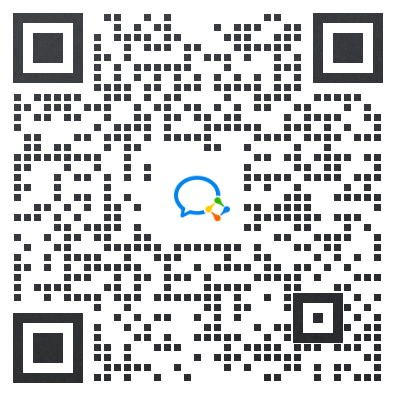
考研微信公众号

考研备考资料免费领取
去领取
- 1
- 1
- 6
 专注在线职业教育24年
专注在线职业教育24年

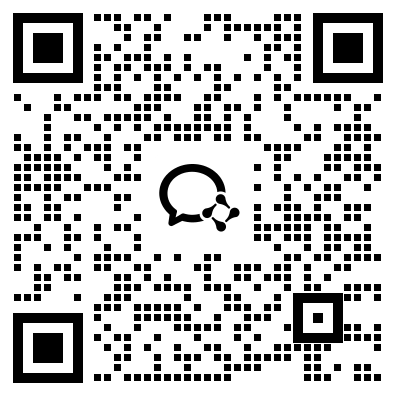







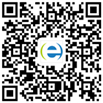 扫描二维码
扫描二维码
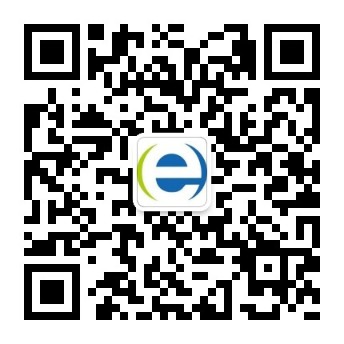 扫描二维码
扫描二维码
